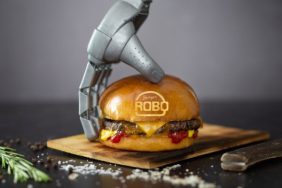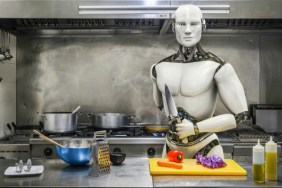The world’s first robot chef cooked for attendees at the Consumer Electronics Show (CES) in Shanghai, Asia, offering demonstrations of how the tech could change the cooking industry on both a personal and a business scale.
The robotic arms can reportedly produce up to 2000 meals from an ever-expanding menu of recipes, utilizing their combined 20 motors, 24 joints and 129 sensors to create dishes such as the crab bisque that was served to the event’s visitors. Here’s what the results of the robot’s labor looked like:

It certainly looks appetizing, though its presentation could do with a little smartening up – that crab meat looks like it’s trying to crawl from out of the bowl.
Needless to say the robotic kitchen, designed by London’s Moley Robotics, has garnered no small degree of interest given the implications it could have on both restaurants and the homes of the wealthy (this tech is presumably far too expensive to make its way into the hands of peasants when its consumer model is released).
Also See: Self-Driving Trucks Could Soon Follow Route 83 from Canada, to the US, to Mexico
According to Moley founder and chief executive Mark Oleynik, the robot’s list of recipes will be able to infinitely increase as it can replicate the actions of a human, thus ensuring that if you somehow get tired of the 2000 dishes pre-programmed into it, there is room for it to eventually learn more.
The robot display at CES 2015 came with a pre-equipped kitchen, as it is necessary for it to have an understanding of the placement of utensils and ingredients, though the consumer model will also be able to be integrated into pre-existing kitchens which is great if you don’t want to destroy a part of your home in order to buy a pair of gigantic robot arms.
Further explaining how the robot’s artificial intelligence will enhance its culinary abilities post-release, Oleynik continued: “Some Chinese recipes may require additional equipment, such as a rice steamer, for example. Whatever equipment the chef has used, the robot should also have one. The kitchen robot is able to work with any additional equipment required for the preparation of the dish.”
It’s not economically viable for a robotic kitchen to become an industry standard in restaurants just yet, but we look forward to a time when we order our food without the lingering fear that someone has spat on our starter and where that feeling of utter disgust when you spot a hair drifting atop the gravy on your steak has been eradicated.
Photos: Getty Images
(Via South China Morning Post)








